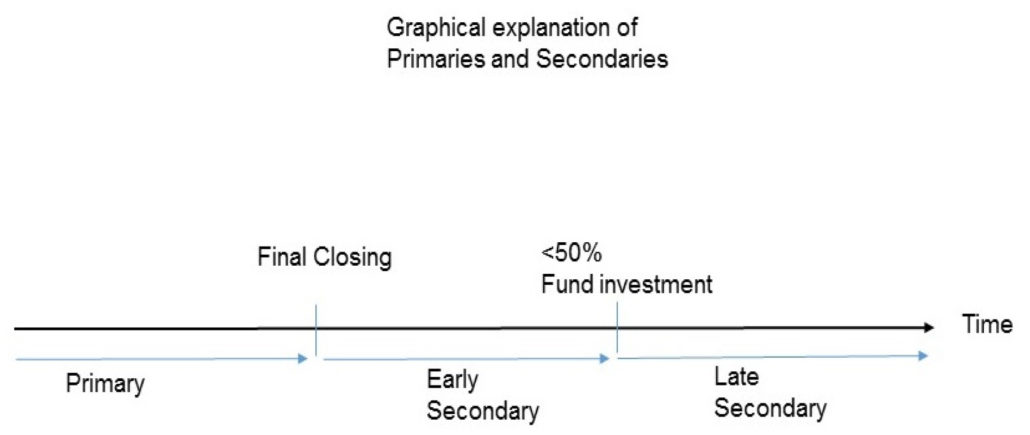SECONDARIES
Secondaries per se are not an own asset class but a strategy. If an investor wants to sell her investment, this becomes a secondary. Thereby the buyer also acquires potential outstanding commitments of the seller. Secondaries can be found in many fields of alternative investments like Private Equity, Private Debt, Infrastructure or Real Estates.
Since the underlying assets are quite illiquid, it becomes challenging to sell the investment once it is bought. That is why they are often sold with a discount. The advantage of buying a secondary is that one enters into an already invested fund. Thus, one gets a good overview about the investments in the fund. Moreover, since the fund is already invested there is none or little of a j-curve effect. Hence, secondaries produce cash-flows right from the beginning and are an interesting vehicle to place into a primary-portfolio to diminish the portfolios underlying j-curve effect.
There can be multiple reasons why an investor is selling its investment. First and for all, one should not think that secondaries are the “bad” assets an investor wants to dump. For the most part it is simply because the investor wants to change its strategy or needs money on short notice.
Co-investments per se are not an own type of asset class but a strategy. Co-investments acquire minority stakes of an investment. They can be found at Private Equity, Private Debt, Infrastructure and Real Estates investments. A lead investor supervises the investment such that the co-investor can minimize its own supervision of the investment. The co-investor gets in return for its stake a share of the profit. A LP can typically get co-investment rights in a fund when she commits a certain amount to the fund. Thus, a LP earns the right to become a co-investor in every deal the fund is doing.
In contrast to a simple commitment to the fund, the co-investor gets more transparency and control about the investment. Moreover, she gets presented a couple of deals and thus can save on its own deal sourcing. In addition, the fees are typically lower when an investor becomes a co-investor. The advantage for the GP is that she can realize deals that she could not realize with the fund alone. Such deals can also help to improve the relationship between the LP and GP, which can be helpful for future investments.
According to a survey by Preqin in 2014, around 52% of LPs who were asked about their performance of their co-investments answered, that these investments performed significantly better than their normal fund investments.




